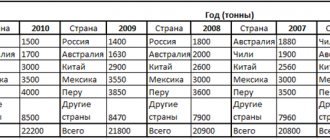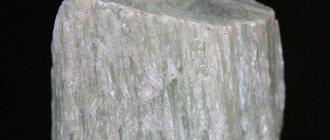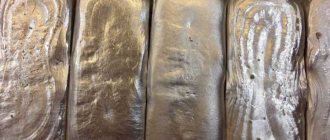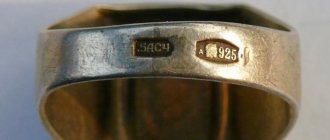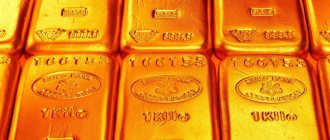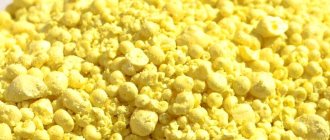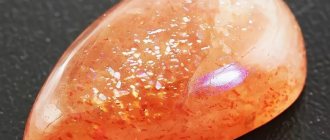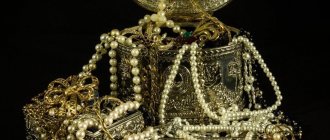Silver is a noble metal with a characteristic silvery-white color. It has been known since ancient times and is mined on different continents. The metal is popular in jewelry, medicine, various industries and industries.
- Physical properties
- Cyanidation
Historical reference
People have been familiar with silver since ancient times, as it was a popular nugget and did not require smelting ore. The oldest centers of metal mining and processing include prehistoric Sardinia, where it became known in the early Chalcolithic period.
Silver includes archaeological finds on different continents. Accessories dating back to 5.5–7 millennia were found on the territory of Ancient Egypt. The metal was then obtained from ancient deposits in Syria.
Since ancient times, the element has been assigned magical and healing properties. Because of this, it was associated with the Moon and was used by alchemists.
Silver is second only to gold in importance among precious metals. People learned to clean it about 2.5 thousand years ago. Previously, large mortars were used to grind ore to obtain a powder in which silver was separated from various impurities.
The value of the precious metal began to rise rapidly after the first coins were minted. This happened in Mesopotamia half a millennium BC. In Rus', payments were also made using silver - first, the required piece was cut off from a block of metal, then coins appeared.
Silver in nature
Finding pure metal is rare. Much of it consists of sulfites and shales. There are 60–70 mg (maximum 1 g) of the precious element per ton of rock.
It is profitable to extract silver from gold-silver, copper and lead ores. There are different connections:
- Electrum is a type of native gold that contains up to 50% silver. The compound is represented by lamellar formations or dendrites of white, light yellow, greenish color. It can be opaque, with a metallic sheen.
- Argentite is a silver-containing ore, a compound with sulfur. It occurs as a solid mass, in plates or crystals. It comes in iron-black or blackish-gray color. The connection is opaque and has a metallic luster.
- Galena is the most important source of lead. In addition to silver, it may contain cadmium, selenium and other impurities. It occurs in solid masses and cubic crystals. Characterized by lead-gray color, opacity and dull metallic luster.
- Proustite is an arsenic-silver blend. It is found in translucent solid masses of scarlet, crimson-red, reddish-gray color. Characterized by diamond shine and darkening in the light.
- Pyrargyrite is a relatively rare mineral, a compound with antimony, containing almost 60% silver. It is found in dendrites, granular inclusions, and plaque. It can be purple-red in color, translucent, translucent. Characteristic is a diamond semi-metallic luster.
- Stephanite (sour, brittle or black silver) - contains almost 70% precious metal, as well as sulfur and antimony. It occurs in solid masses and crystals of gray or black color.
The precious metal is also found in deposits of quartz, coal, oil, and polymetals. Sea water contains microscopic particles of silver, but it is difficult to extract it under such conditions, since the necessary technological base is missing. To obtain 1 g of metal you need 25 thousand tons of sea water.
A small amount of the element is contained in living organisms. The precious metal is also found in meteorites falling on the planet.
Scientists estimate that approximately 700 thousand tons of silver were mined. Even nuggets are not easy to recognize, since the metal is coated with a dark gray sulfide coating. Sometimes it resembles tangled wire or dry moss and is brownish or rusty in color. This effect is achieved by iron hydroxide coating the metal.
From Macedonski to Sapkowski
In the troops of Alexander the Great, military leaders were sick less often than privates. But both the food and the conditions during the hikes were the same for everyone. The reason for good health (as medical historians suggest) is in the dishes. The rank and file ate from tin plates, while the military leaders were given silver plates.
Our Russian ruble is inextricably linked with silver. No, there is currently no precious metal in ruble and other consumable coins. But the coin got its name from the word “chopping.” In Ancient Rus', silver ingots or rods were in circulation; they were called hryvnias. A piece was cut off from them (corresponding to the price of the product), and it was called a ruble.
Mystical powers have always been attributed to the precious metal. Protection from any evil spirits (even vampires and werewolves, who could only be killed by silver weapons), from the evil eye and other horrors of the night.
Those who have read Sapkowski's books about the witcher Herald (or played computer games based on the book) know: the witcher's sword was made of pure silver metal. After all, the Rivan’s profession was the destruction of all kinds of evil spirits.
Properties
The popularity of silver and its many uses is explained by the physical and chemical properties of the element.
Physical properties
The pure element is heavy, its density is 10.5 g/cm³. The metal has a silver-white color and the following physical properties:
- softness;
- extraordinary plasticity - during processing the material easily changes shape;
- thermal conductivity 429 W/(m*K) - the highest among metals;
- highest electrical conductivity (at room temperature) among metals;
- relative refractoriness—melting point 962 °C;
- reflectivity - the property is used to make mirrors;
- no susceptibility to corrosion.
Chemical properties
In the periodic table of Mendeleev, silver has atomic number 47. It belongs to group 11 (copper subgroup). The chemical properties of the element are as follows:
- lack of reaction with other substances (natural conditions);
- opposition to aqua regia;
- no exposure to oxygen, silicon;
- dissolution in mercury to form an amalgam (liquid alloy) - this property is used in metal processing;
- dissolution in nitric, hydrochloric (if oxygen is present), hot concentrated sulfuric acid;
- formation of sulfide when heated with sulfur;
- with ultraviolet irradiation, oxidation with ozone and oxygen plasma, thin films are formed;
- sensitivity to sulfur;
- tarnishing (darkening) over time - the cause is a reaction with traces of hydrogen sulfide in the air, a sulfide deposit with a pinkish film is formed;
- insolubility of silver salts in water with the exception of nitrate, fluoride, perchlorate.
APPLICATION
Silver is used mainly in alloys with copper for the manufacture of silver items, coins, etc. Pure silver is used for filigree work, making crucibles for melting alkalis, for silvering, for obtaining chemical compounds and other purposes. The bulk of silver (about 80%) is mined not in native form, but as a by-product from silver-rich lead-zinc, gold and copper deposits. The areas of application of silver are constantly expanding, and its applications include not only alloys, but also chemical compounds. A certain amount of silver is constantly consumed for the production of silver-zinc and silver-cadmium batteries, which have very high energy density and mass energy intensity and are capable of delivering very high currents to the load with low internal resistance.
Silver extraction methods
Today, silver nuggets are found less frequently. Production varies:
- mine (underground) - a system of galleries is created;
- quarry or open (above ground) - massive trenches are dug;
- borehole - a drill is used to extract ores;
- marine (below sea level).
For silver, mining is more often used. They also resort to the quarry method and develop the borehole method. Ore is extracted through the following steps:
- drilling holes and laying explosives;
- raising fossil fragments to the surface;
- thorough examination of the ore;
- crushing rock using a special crusher.
The element must be isolated from the mined ore. This is done using cyanidation or amalgamation.
Cyanidation
This technique involves a tandem of oxygen and cyanide - these components do not work separately. It is used for rock processing, the target raw material is dissolved.
The next stage is filtering. Using zinc powder, a precipitate is obtained, which is fused. The processing does not end there - complete cleansing of impurities is necessary. This is done in specialized factories.
Amalgamation
Mercury is used for processing. The ore is exposed to temperatures of 1000 °C. The raw material is melted and chemicals are added to prevent the precious metal from burning out.
Then the heat treatment is repeated so that the liquid evaporates. All metals contained in the ore are melted. The process takes 4 hours. The silver is poured into molds and it cools in just 5 minutes.
The resulting ingots are compared with the standard. This is done to determine the sample.
History of discovery
Silver has been known to people for a long time. Historians first noted its significance around the 4th millennium BC. e. Then the first jewelry appeared from this noble metal, which was used as exchange currency.
Over time, people learned the properties of this material and began to use it to purify water from impurities. Shamans and clairvoyants valued this metal, calling it a protector of the soul. Ritual knives and sacred weapons were made from it. Astrologers called this material moonstone. He was supposed to show the way to lost travelers, drive out evil spirits and darkness along the way.
Silver mining work in Russia
Russia is one of the leaders in silver production - more than 1.6 thousand tons per year. Metal is mined in 20 Russian regions - more than 100 deposits. The Magadan region is in the lead - the leading Dukat deposit and the Lunnoye and Juliet deposits. They bring almost 50% of the silver mined in the country.
25% of the country's production of this metal occurs in the Urals regions. There are large deposits in the Chita and Khabarovsk regions.
The initiator of the search for silver in Russia was Peter I. Today, many organizations are engaged in processing, the largest among them is Polymetal. She is also engaged in exploration work to identify new deposits. Russia exports a small part of its production.
Let it be as bright as the moon
For silver, unfavorable factors are:
- human sweat;
- cosmetic and medicinal preparations containing sulfur, iodine;
- taking vitamin and mineral supplements;
- high temperature (bath, sauna).
All this can harm the color and appearance of the silver item.
Cleaning silver at home is easy. Hold the product in soapy water, rinse, and wipe dry with flannel or suede.
Take your jewelry to a jeweler at least once a year. It will restore the shine and pristine beauty of your favorite trinket using special means.
Good to know: do not try on other people's silver jewelry and do not let them measure your own.
Silver mining operations in the world
More than 20 thousand tons of silver are mined annually in the world. Approximately 25% of this volume comes from Mexico. There are other leading states:
- Peru - more than 4 thousand tons per year;
- China - about 3.5 thousand tons per year;
- Australia - about 2 thousand tons per year.
The volume of production and reserves of the precious metal should not be confused. For the second indicator, the statistics are different:
- Peru has about 23% of the world's reserves;
- 15% of reserves are in Poland, Australia and Chile;
- 7–8% in Mexico and China;
- 5% is in the USA.
The US Geological Survey has found that without the discovery of new large deposits of silver, the world's reserves could run out in 20 years. Canada, Germany and Norway have the maximum potential.
STRUCTURE
Crystal structure of silver
Cubic system; hexaoctahedral c. With. ZL 4 4L6 3 6L 2 9RS. Crystal structure. Face centered cube. The appearance of crystals. Properly formed crystals are very rare. Common forms: , . Doubles by (111). Aggregates. It is sometimes found in the form of typical “knitted” feathery dendrites, thin irregular plates and leaflets. Mossy, hair-like and wire-like forms are also characteristic. The most common grains are irregularly shaped and larger continuous clusters called nuggets.
Metal cleaning
There are other methods for extracting pure silver, for example, the pyrometallurgical method. It is used only when the concentrate is lead or copper elements.
You may be interested in: 925 sterling silver: characteristics and features
Raw copper compounds are placed in an electrical bath to cause electrolysis. Copper dissolves, and silver settles to the bottom.
Raw lead is treated with zinc at a high temperature of 450 degrees. Silver tends to gravitate towards zinc and thus dissolves better. The separated layer of silver and zinc is extracted and the next task is to separate the precious metal.
A temperature of 1250° can evaporate the zinc, but the silver does not remain in its pure form: lead and arsenic are still present. But after treatment with oxygen at 1000°, silver appears in a form in which it can be melted into ingots.
It should be noted that this is a fairly profitable method of purifying metal, since lead and copper are not expensive compounds, which means their processing does not require serious financial investments.
Characteristics and types
The peculiarity of silver is that this beautiful metal loses its brightness and shine after some time due to the influence of hydrogen sulfide, and this substance is contained in the air mass. High electrical and thermal conductivities are also features of silver. It is lighter than copper and heavier than gold. Silver is resistant to alkalis, organic and mineral acids. The metal is classified as noble, and some people believe that it even has mystical powers (associations with the moon, purity, light; they also say that all evil spirits are afraid of silver). This metal is number 47 on the periodic table (periodic table of chemical elements).
The crystal lattice of silver is face-centered, cubic. The conventional chemical designation of the metal is Ag.
There are about 50 silver-containing natural minerals known to man, but only about 15-20 subspecies are important for industry: native silver, electrums (gold and silver), argentites (silver and sulfur), kustelites (silver and gold), proustites (silver and arsenic -sulfur), bromargerites (silver and bromine), stephanites (silver and antimony-sulfur), dyscrasites (silver and antimony), freibergites (copper-sulfur and silver), polybasites (silver and copper-antimony-sulfur), argentoyarosites (silver and iron-sulfur), cerargyrites (silver and chlorine), pyrargyrites (silver and antimony-sulfur), aguilarites (silver and selenium-sulfur), etc.
